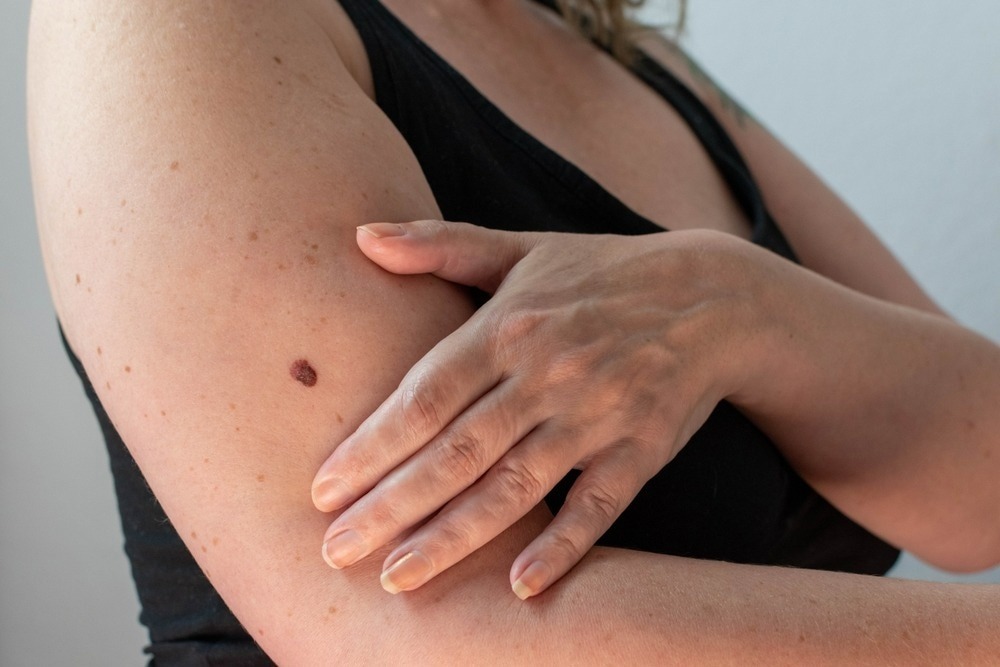Hopefully, you are checking your body regularly for signs of skin cancer. Common symptoms of skin cancer include asymmetrical moles, patches of skin of different colors – brown, black, pink, white, or red – or raised reddish patches on the skin that won’t go away and itch. But there are also lesser-known signs of skin cancer, and we want you to know them.
Here are five unusual signs of skin cancer to look out for. These are not the typical signs we usually think of as signs of skin cancer; in turn, people may miss these signs when examining their skin for skin cancer
1- Changes in your fingernails
Imagine you get your nails done at your local nail salon every two weeks. After removing the nail polish, you notice a dark brown or black spot on your nail that has stained the nail bed. This is not the result of a manicure! This discoloration may be a form of skin cancer known as subnail melanoma. Although it is a sporadic form of cancer, it is most commonly found in adults 60 and older. This condition can also appear as a hematoma that does not grow with the nail. It is most commonly found on the big toe or big toenail and often occurs in non-Caucasians (only 2% of cases occur in people with white skin).
Another form of skin cancer that can be seen around the nails is squamous cell carcinoma. This type of skin cancer can also cause abnormal nail growth. They can also appear on the skin around the nails and look similar to warts.
So be sure to keep a close eye on your nails and, if you are at risk (non-Caucasians over 60), use only clear nail polish to see if you develop any of these unusual symptoms.
2. Pimple-like growths
Indeed, skin cancer can sometimes look like a pimple! But it is more likely to be a waxy or hard red bump. This swelling can be a sign of basal cell or squamous cell carcinoma.
The most correct is a mass that appears suddenly and doesn’t seem to disappear for several months. When this happens, you’ll know it’s time to see a dermatologist for further action.
3- Irregular eye examinations
Believe it or not, melanomas can appear on the eyes; we call them ocular melanomas. If you have a history of melanoma, an eye exam once a year is recommended. When examining your eyes as part of a routine annual eye exam, dermatologists may notice these masses, but they may be very subtle. You may not even see them. An ophthalmologist often discovers them during a routine eye exam.
Although a rare type of cancer, a cancerous tumor can spread to other parts of the body, such as the tissues in and around the eye. People with fair skin, those frequently exposed to the sun’s ultraviolet rays on their eyes, and the elderly are at the highest risk of developing this type of cancer.
Intraocular melanoma is another example of why you should have your eyes checked once a year, as many eye doctors can immediately detect intraocular melanoma.
4. A mole that loses color
Cancerous skin tumors can start as benign moles or occur de novo on the skin. If a mole enlarges, loses color, and becomes similar to standard skin color, it is worth seeing a dermatologist, as it may be skin cancer.
Since this type of melanoma skin cancer does not have the classic dark and irregular pigment symptoms, you may not notice it during a routine body examination for suspicious moles. However, they may have asymmetry and irregular borders, two classic symptoms of skin cancer.
5. Chapped lips
Prolonged lip exposure to the sun can manifest as chapped lips. However, if it doesn’t go away or disappear, it’s time to see a dermatologist. This condition may be actinic cheilitis, and although it is considered precancerous, you need to take action quickly to prevent it from progressing.
The most common symptoms to look out for include:
swelling
redness
dryness
black-brown discolored areas of lip skin
Many people ask if this condition is contagious, but it is not. This condition is highly treatable if detected early.
Rule of thumb: Keep a close eye on the condition of your skin
Don’t forget that the Skin Cancer Foundation recommends examining your skin from head to toe on a monthly basis, especially looking for new moles or signs of change in an existing mole. If you notice any suspicious changes, you should see a dermatologist immediately.

 Discuss
More news
Discuss
More news


